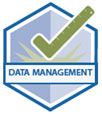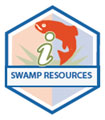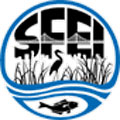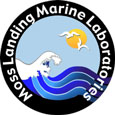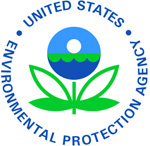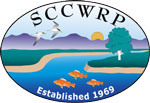
SWAMP IQ Bioaccumulation
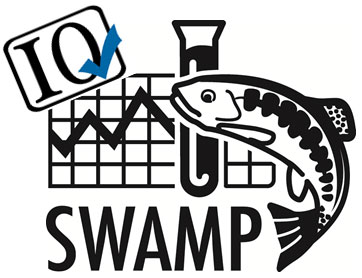
About Bioaccumulation
The term “bioaccumulation” refers to the uptake and accumulation of chemicals in an organism over time. Bioaccumulation occurs through respiration, ingestion, or direct contact with substance(s) and can result in organism tissue concentrations that are several orders of magnitude greater than the environmental concentration. This buildup occurs when chemicals are absorbed faster than they are excreted or metabolized. Bioaccumulation presents a risk to both the humans and wildlife that consume contaminated fish, as the toxins present in the fish tissue can be transferred to them, resulting in potential health problems.
 Quality Assurance and Quality Control
Quality Assurance and Quality Control
Answering any research question with a high degree of confidence requires high-quality data. Studies that produce low-quality data undermine project goals and can result in lost time and money. Therefore, it is crucial to ensure data usability through good quality assurance (QA) practices.
QA is comprised of an integrated system of management activities that are developed during the planning phase of a project. These activities are typically detailed in a QA plan that includes quality control (QC) requirements and corrective actions for field collections and laboratory analyses.
Sample Collection
In addition to fish, crustaceans and bivalves are frequently collected for analysis. Organisms are collected using a variety of devices, including trawl nets, gill nets, and electrofishing equipment. Each organism is measured, weighed, and assigned a unique identification number. The latitude and longitude of the area in which the organism was caught is also recorded before the sample is preserved on ice.
Tissue Composites
Once fish are collected for a given bioaccumulation study, they are composited to include a uniform quantity of tissue from the species of interest. These homogenized samples, consisting of at least three fish, are then analyzed as individual samples in order to provide a measure of average chemical concentrations at a reduced cost. Projects adhere to the “75 percent rule” which requires that the length of the smallest fish in a sample be at least 75 percent of the length of the largest fish in that sample.
Tissue Chemistry
Bioaccumulation studies analyze a variety of chemicals, ranging from metals such as methylmercury, to organics such as polychlorinated biphenyls (PCB). For information about the QA/QC procedures for these analytical methods, please visit the SWAMP chemistry data webpage.
 Data Management
Data Management
Data management is another vital component of ambient monitoring that incorporates QA measures such as uniform business rules and data review. These strategies ensure the usability of the data generated for a project.
Business Rules
Standardized language and formatting promotes consistency and prevents the misinterpretation of data. Business rules establish a uniform method of data entry that enables both project staff and end users to easily understand test results.
Data Review
Data should be reviewed by all applicable project staff, beginning with the field crew and laboratory data managers, and ending with the project managers and QA officers. This verification process ensures that sample collection details, such as the date, time, and location of the event are recorded in the proper format. Data reviewers also confirm that test QC measures, such as matrix spikes and laboratory duplicates, are acceptable for a given method. In addition to examining these elements, reviewers confirm that all appropriate business rules have been followed.
Water Board Databases
The Water Boards utilize various databases to store a large quantity of information about water quality above and below ground. Summaries and links to these databases are provided below.
- The California Environmental Data Exchange Network (CEDEN) houses information about the health of California’s streams, rivers, lakes, and coast (SWAMP project data is uploaded to this database).
- The GeoTracker Groundwater Ambient Monitoring and Assessment (GAMA) Information System integrates and displays groundwater quality data on an interactive, Google-based map.
- The California Integrated Water Quality System Project (CIWQS) tracks effluent data and permit information about wastewater dischargers.
- The Storm Water Multiple Application and Report Tracking System (SMARTS) Database was developed for dischargers to electronically file their storm water permit documents.
Measurement Quality Objectives
In an effort to promote precision and reduce bias, SWAMP has established field and laboratory guidelines for various analytes. Dubbed “Measurement Quality Objectives (MQO),” these guidelines contain both recommendations and requirements for sample collection and laboratory analyses.
- Ancillary Parameters in Freshwater Tissue and Marine Tissue
- Inorganic Analytes in Freshwater Tissue and Marine Tissue
- Synthetic Organic Compounds in Freshwater Tissue and Marine Tissue
 SWAMP Resources
SWAMP Resources
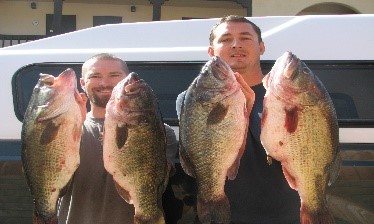
- Data review webpage <coming soon>
- State Water Board QA/QC webpage – QA and QC are components of a “quality system,” which is a structured system that describes the policies and procedures for ensuring that work processes, products, or services satisfy the user's specifications and expectations. Documents used in the State Water Board’s Quality System can be downloaded here.
- Tissue Data Template – All laboratory data generated for SWAMP projects must be entered into the appropriate data template.
- The data template for tissue composite information can be downloaded here.
- Tissue chemistry results are recorded on the tissue results data template, which can be downloaded here.
- SWAMP Business Rules – SWAMP utilizes standardized language (“lookup values”) and formatting (“business rules”) for its various data templates in order to promote uniformity and facilitate loading to the SWAMP database.
- Business rules are outlined in the Tissue Template Guide.
- SWAMP’s lookup value glossary can be accessed here.
- Online Data Checker – SWAMP’s Online Data Checker identifies business rule violations and missing elements in data templates and should be used prior to data submittal. This program can be found on SWAMP website.
- Office of Information Management and Analysis (OIMA) Helpdesk – SWAMP data templates and questions should be sent to the OIMA Helpdesk at: OIMA-Helpdesk@waterboards.ca.gov.
 Additional Resources
Additional Resources
Bioaccumulation Oversight Group (BOG) – BOG, a workgroup of the California Water Quality Monitoring Council, was created to assess the impacts of contaminants in fish and shellfish in water bodies throughout the state. In addition to conducting bioaccumulation research and synthesizing data from other studies, BOG manages the Safe to Eat Portal and a forum for coordinating bioaccumulation monitoring. These studies and resources can be accessed on the BOG webpage.
 Contact Us
Contact Us
For questions regarding these data types, please contact:
Tissue Composite Data and Tissue Analyses
(916) 319-0232
Tissue Chemistry Data
(916) 319-0232
Let us know how we can improve our webpage.
Please send comments and suggestions to the Office of Information Management and Analysis Help Desk: OIMA-Helpdesk@waterboards.ca.gov
Are you a SWAMP member? Click here for internal SWAMP IQ Center resources


